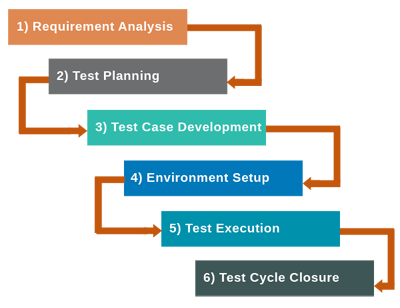Requirement Analysis
During this phase, Test Team studies the requirements from a testing point of view to identify the testable requirements.
The Test Team may interact with various stakeholders (Client, Business Analyst, Technical Leads, and System Architects etc.) to understand the requirements in detail.
Requirements could be either Functional (defining what the Software must do) or Non- Functional (defining System Performance / Security Availability).
There are various factors which impact the identification of Test Conditions:
- Levels and Depth of Testing
- Complexity of the Product
- Product and Project Risks
- Software Development Life Cycle Models involved
- Test Plan Management
- Skills and Knowledge of the Team
- Availability of the Stakeholders
Entry Criteria
The following documents are required:
- Requirements Specification
- Application Architectural / Application Design Document
- User Acceptance Criteria Document
Activities
- Identify types of Tests to be performed
- Gather details about Testing Priorities and Focus
- Prepare Requirement Traceability Matrix (RTM)
- Identify Test Environment details where Testing is supposed to be carried out
- Prepare the list of questions or queries and get resolved from Business Analyst, System Architect, Client, Technical Manager/Lead etc.
- Make out the list of all Types of Tests to be performed like Functional, Security, and Performance etc.
- List down the Test Environment details where Testing Activities will be carried out
- Checkout the Automation Feasibility Analysis if required & prepare the Automation Feasibility Report
Deliverables
- RTM(Requirement Traceability Matrix)
- List of questions with all answers to be resolved from Testable Requirements
- RUD (Requirements Understanding Document)
- Automation Feasibility Report. (if applicable)

